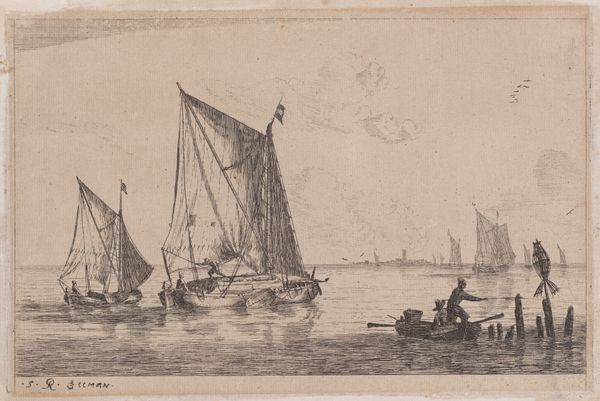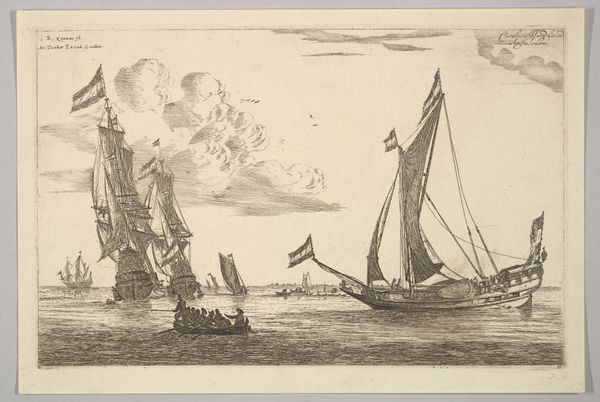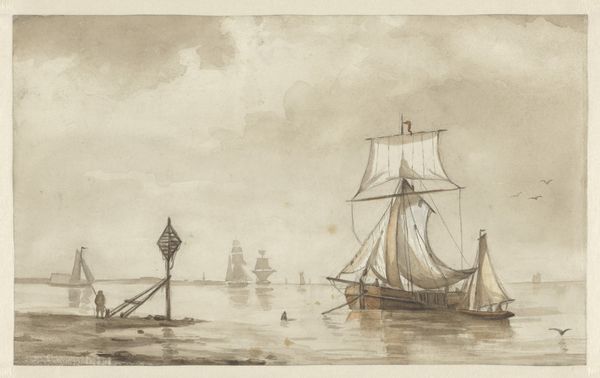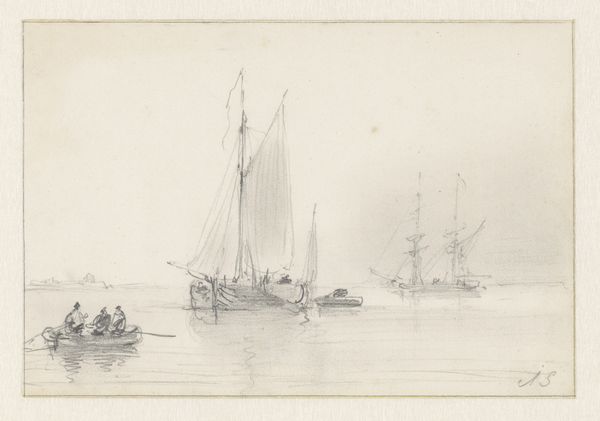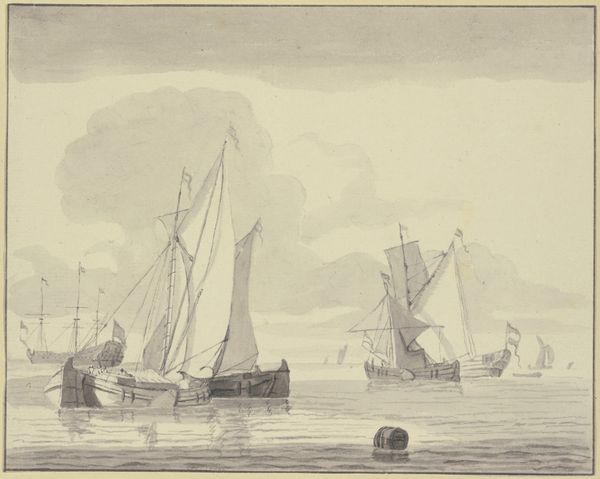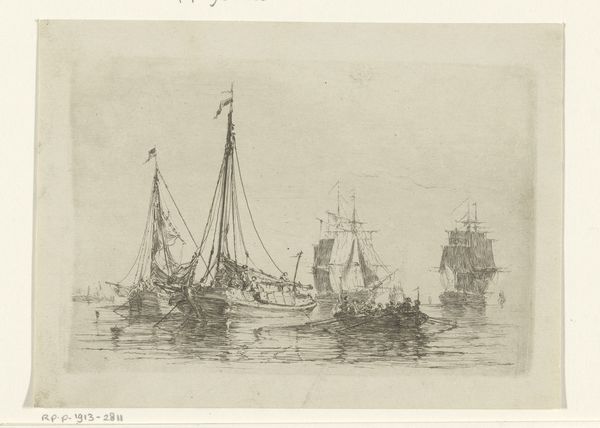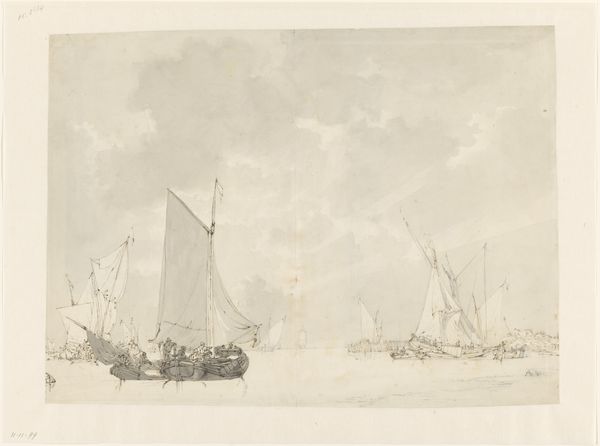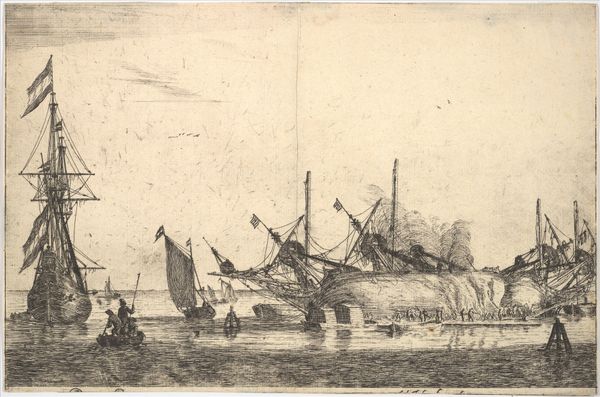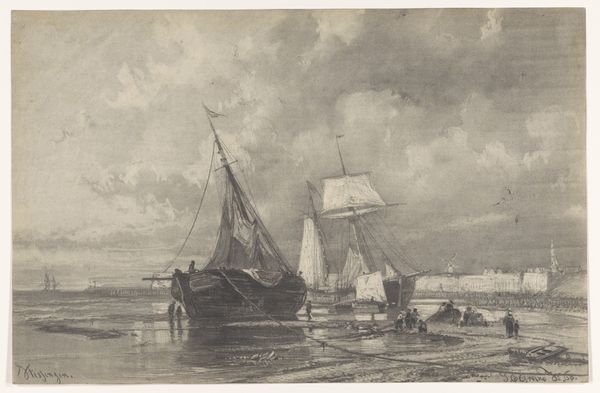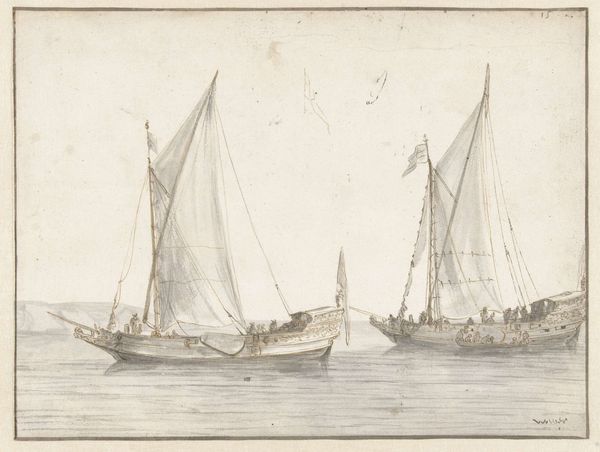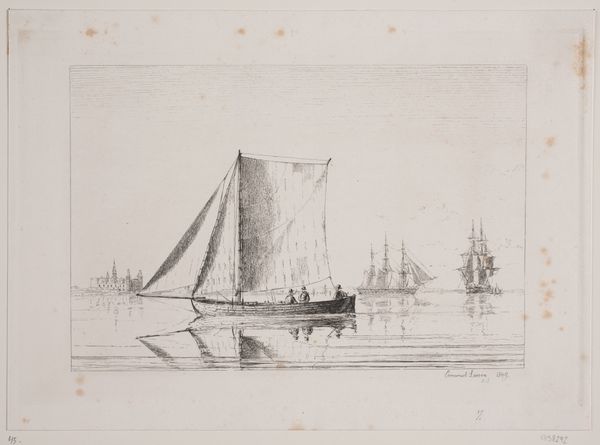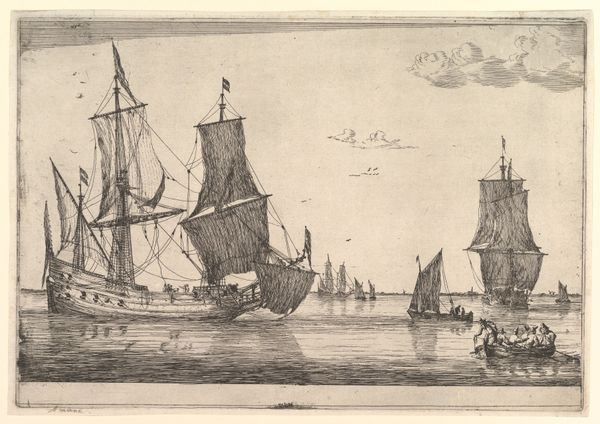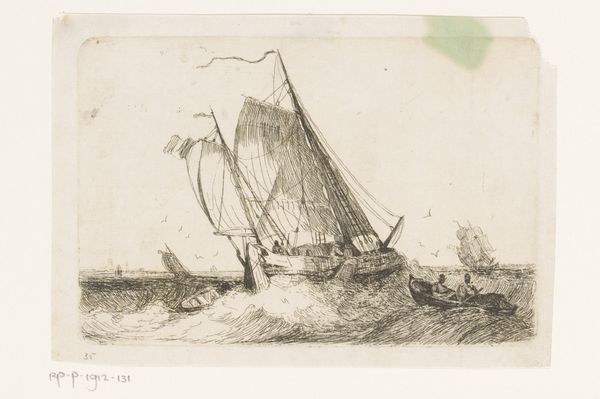
print, etching
#
baroque
#
dutch-golden-age
# print
#
etching
#
landscape
#
line
#
genre-painting
Dimensions: plate: 13.1 × 20.5 cm (5 3/16 × 8 1/16 in.) sheet: 14.1 × 21.2 cm (5 9/16 × 8 3/8 in.)
Copyright: National Gallery of Art: CC0 1.0
Reinier Nooms, also known as Zeeman, created this etching of sailing vessels, using a copper plate and etching needle. The image’s fine lines, capturing the ships, water, and sky, were achieved through the meticulous process of etching. To create an etching like this, Nooms would have coated a copper plate with a layer of wax, before using a sharp needle to draw this composition, exposing the metal beneath. The plate would then be submerged in acid, which bites into the exposed lines, creating grooves. The wax is removed, ink is applied to the plate, filling these grooves, and the surface is wiped clean. Finally, the plate is pressed onto paper, transferring the ink and image. The resulting print captures the nuances of light and shadow, conveying the maritime atmosphere with remarkable detail. Etchings like this one were relatively inexpensive to produce, feeding the 17th-century Dutch Republic's booming art market, and reflecting the era's maritime trade and naval power. Looking closely at the print, we are reminded of the labor and skill involved in both sailing and printmaking, essential aspects of Dutch society during the Golden Age.
Comments
No comments
Be the first to comment and join the conversation on the ultimate creative platform.
